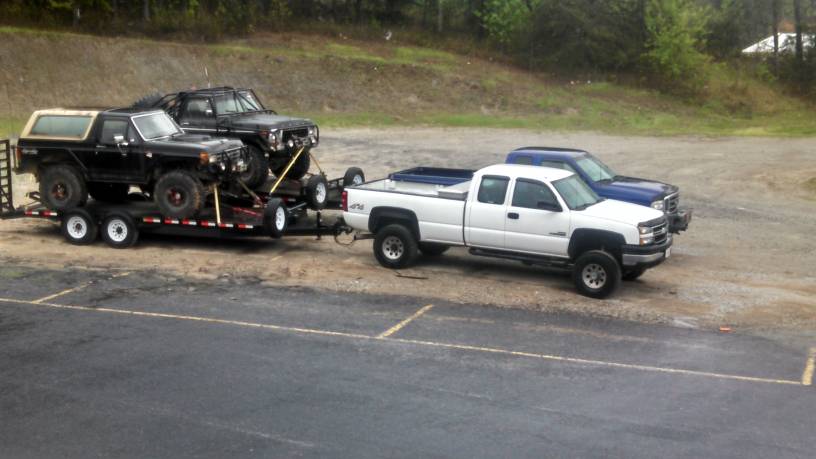ckruzer
Infidel
- Joined
- Jul 2, 2015
- Location
- asheville nc
Looking for an information download from trusted sources here on NC4x4. What are some highlights that come to mind? Do's and Don'ts? Can you recommend strongly advised truck improvements for safety and performance?
Truck: 2010 Ram 1500, Stock (f/r coils). Trans temp gauge 7400 standard tow, and 9950 max
Trailer TBB: tandem lowboy, 2 axle, 18ft
Some additional Truck Info from Build Sheet
Canadian. Laramie. 4x4. 545RFE Auto Trans. 5.7 V8 Hemi MDS VVT Engine. HD Trans Cooler. HD Engine Cooling. 160amp alt. Traction Control. 4 Wheel disc. 205mm HD Front Axle. 3.55 gears. Corp 9.25 LD Rear. IFS. Aux Readings (Trans Temp, Oil Temp, Oil PSI, Tire PSI, Water Temp). 12v aux outlet. Engine block heater. F/R Sway bar. HD Shocks f/r (stock, 160k). Park Sense / Park Assist Sensor System. 4 and 7 pin trailer harness system. 5ft Bed. 32 Gal Tank. Next Gen Engine Controller (?). Aluminum Wheels R20. Tow Hooks. Tcase Skid Plate. Front Suspension Skid Plate. Class IV Receiver hitch. TPMS.
Modded Info Based on This Thread
Truck: Better rear coils (which ones). SumoSprings. Catch Can.
Trailer: Foldup ramps. 500# min tongue weight. Ratchet straps, axle to trailer. 2 tire spares. bottle jack and dedicated tools.
Thanks!
Truck: 2010 Ram 1500, Stock (f/r coils). Trans temp gauge 7400 standard tow, and 9950 max
Trailer TBB: tandem lowboy, 2 axle, 18ft
Some additional Truck Info from Build Sheet
Canadian. Laramie. 4x4. 545RFE Auto Trans. 5.7 V8 Hemi MDS VVT Engine. HD Trans Cooler. HD Engine Cooling. 160amp alt. Traction Control. 4 Wheel disc. 205mm HD Front Axle. 3.55 gears. Corp 9.25 LD Rear. IFS. Aux Readings (Trans Temp, Oil Temp, Oil PSI, Tire PSI, Water Temp). 12v aux outlet. Engine block heater. F/R Sway bar. HD Shocks f/r (stock, 160k). Park Sense / Park Assist Sensor System. 4 and 7 pin trailer harness system. 5ft Bed. 32 Gal Tank. Next Gen Engine Controller (?). Aluminum Wheels R20. Tow Hooks. Tcase Skid Plate. Front Suspension Skid Plate. Class IV Receiver hitch. TPMS.
Modded Info Based on This Thread
Truck: Better rear coils (which ones). SumoSprings. Catch Can.
Trailer: Foldup ramps. 500# min tongue weight. Ratchet straps, axle to trailer. 2 tire spares. bottle jack and dedicated tools.
Thanks!
Last edited:



